Sun Exposure and Cacti: What You Need to Know
The cactus is a beautiful low-maintenance plant that can be found in many different places across the globe, but what do you need to know about caring for this desert-dwelling plant? One of the most important things to consider when growing a cactus is access to sunlight. Do cactus plants need sunlight? The answer may surprise you!
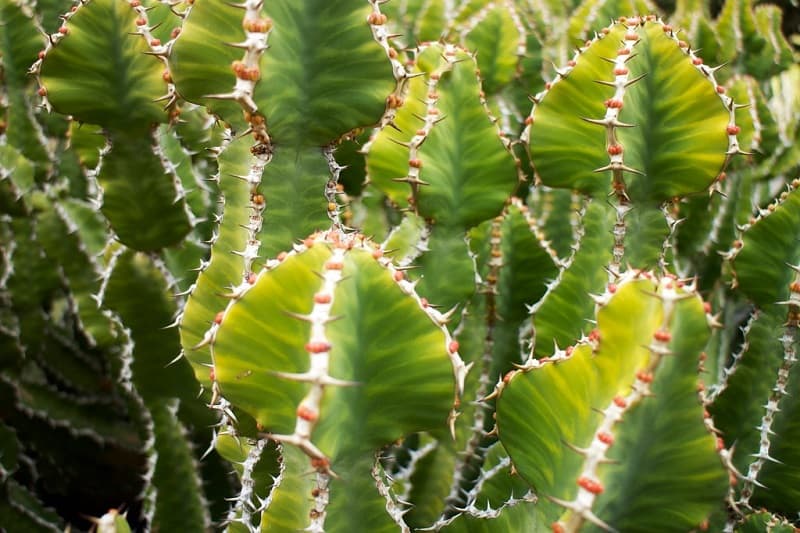
This page contains affiliate links, and as an Amazon Associate we earn from qualifying purchases which means we receive a small commission when you make a purchase, at zero cost to you.
Contents
Do Cacti Need Sunlight?
Cacti actually only need a few hours of bright sunlight. It’s important to place adult plants near windows with cactus soil. If you don’t have access to natural sunlight, you can use artificial light for your cactus. Cactus grow lights are a good option because they provide plenty of bright light.
But how do you know if your cactus isn’t getting enough light? Well, cacti don’t grow quickly, so you might only notice later if they’re unhappy in a certain spot. However, there are some signs you can spot before it’s too late.
A cactus that doesn’t get enough light will keep trying to find more. To save energy, the new growth will be thin, stretched out, and maybe even pointy for bulb cacti. This is a sign that your cactus needs more light. Sometimes, the growth can be very fast because the cactus wants to find light as quickly as possible. However, this growth spurt isn’t good for your cactus, even if it seems fine at first.
This process is called etiolation, and your cactus might turn a bit yellowish instead of its usual deep green. The plants will become weak and unhealthy.
For example, a cactus that used to be round might become elongated with a narrow point at the top. An opuntia (the cactus with ‘rabbit ears’) might have tall and thin new growth for its ‘ears’. An unhealthy light green color or drooping cactus are other signs something’s wrong.
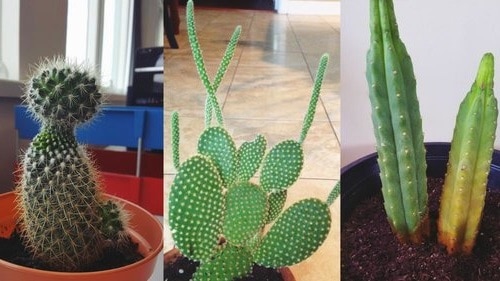
How much sunlight does a cactus need?
Cacti love bright places, but they don’t like intense sunlight. It’s best to keep them in a spot with at least 3,000 lux of light. Remember, the brighter, the better! Most cacti can handle the strong midday sun, even if it’s filtered through glass.
To check if your chosen spot has enough light, you can use a lux meter. It measures how intense the light is. You can find these meters at garden supply stores or online. Make sure it measures between 700 and 5000 lux and gives accurate readings.
- 4-Range Settings: 0/200/2,000/20,000/200,000 Lux
- High Accuracy: With auto zeroing capabilities
- EZ-Read Display: Clearly readable info
- Convenient Switches: With Data Hold & Peak Data hold
- Lower power consumption
- Bring Anywhere: Fits easily into a large pocket and barely adds any weight
If you have a handheld exposure meter for photography, you can use that too. Set the film sensitivity to 18 DIN or 50 ASA. Here’s a chart to help you understand the light values.
| Light value | Aperture / time | Illuminance |
| 7 | 1/4 s at f. 5.6 | = 700 lux |
| 8 | 1/8 s at f. 5.6 | = 1400 lux |
| 9 | 1/16 s at f. 5.6 | = 2800 lux |
| 10 | 1/30 s at f. 5.6 | = 5600 lux |
But don’t forget, measure the light on a normal day when it’s slightly cloudy in the morning or afternoon. If you measure at noon, you might get misleading values.
Measure the light where your cactus is or will be. Not just at the front of the window, but also inside where the cactus will be placed. You might be surprised by the differences in light!
You can also measure in different parts of your living room or corners that could use some greenery. Usually, the light there is too low for cacti to thrive in the long run. Avoid using room artificial lighting because it usually doesn’t provide enough light for cacti. With their small space requirements, you can almost always find a suitable spot in natural sunlight.
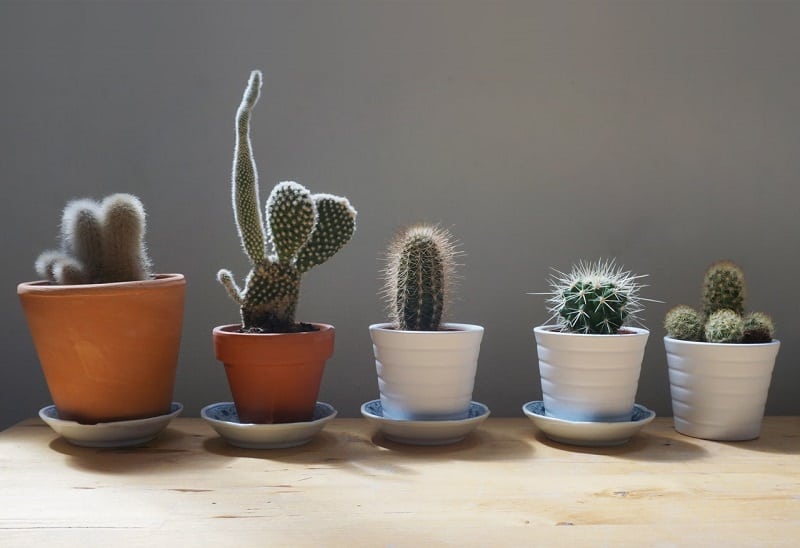
Can a cactus get too much sun?
Yes, a cactus can be harmed by too much sun.
If a cactus gets excessive sunlight, it can turn bluish or reddish. When this happens, it’s important to protect it from direct sunlight. In the beginning stages, the discoloration can fade over time if you shield it from the sun. However, if you leave it in full sun, there are two possibilities: either it gradually adapts to the sun or it slowly dies.
Where should you plant a cactus?
Even though cacti don’t need a lot of water or soil, they do need plenty of light to grow. It’s best to place them outdoors or near a south-facing window. However, during cold winter months, consider moving them to a cool room.
When planting cacti in a garden, there are some guidelines to follow for finding a suitable spot. They thrive when they can enjoy bright sunlight for at least 5 or 6 hours a day, either in the morning or afternoon.
Larger cacti can handle more sun than smaller ones, but even when they are 4-5 years old, it’s wise to provide them with some shade part of the day. Young seedlings should be protected. The soil in dark plastic pots can get too hot in the sun and damage the roots, so it’s best to use white or colorful pots. If you have no other choice, cover the outside of a dark pot with paper or a thick white material.
For indoor cacti, try to take them out on a balcony during the summer. This way, they can enjoy a few hours of sunlight and fresh air. If the natural light indoors is low, that’s okay! There are cacti, like the Schlumbergera, that come from equatorial forests and can do well in such conditions. Plus, they offer beautiful flowers!
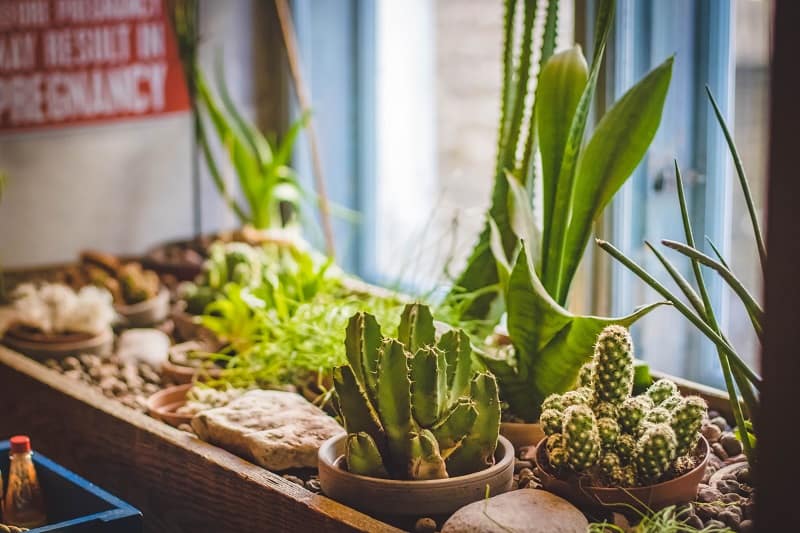
Cacti That Thrive Without Much Sun
Epiphytes
Certain cactus species need protection from direct sunlight during the hottest part of the day. These are called epiphytic cacti, which grow on other plants without harming them. You can find these types of cacti in tropical forests, where they enjoy the shade provided by trees forming a canopy.
Some examples of epiphytic cacti are:
- Schlumbergera: These cacti should be kept away from direct sunlight. You can place them on a table or use a curtain to create shade between the cactus and the glass window.
- Rhipsalis: This species, native to South American forests (and some found in Africa too), differs from other cacti. They have few or no thorns and instead feature beautiful drooping stems. Rhipsalis cacti love shade and humidity.
- Epiphyllum or Disocactus family: Considered some of the most attractive epiphytic cacti species, they are satisfied with a little shade. However, cultivating them in our regions can be challenging.
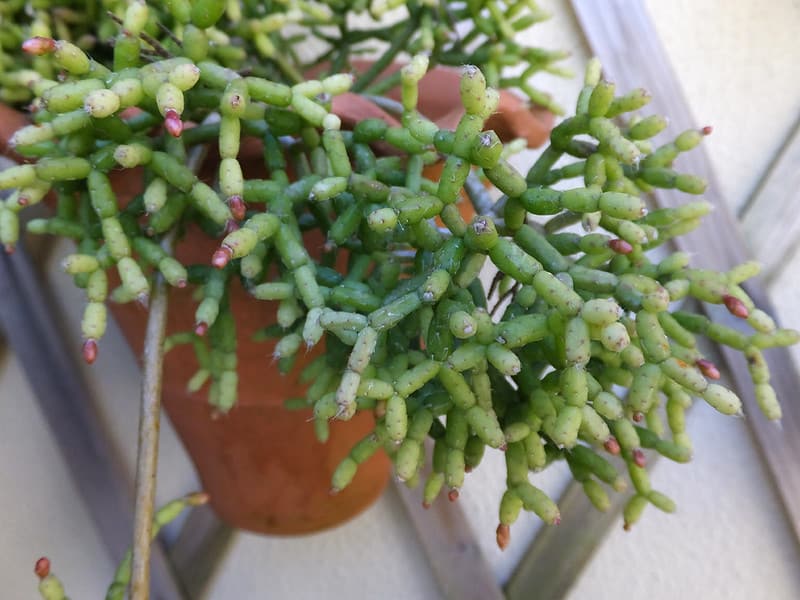
Shade-tolerant cacti
Here are two cactus species (though they are quite rare) that are not epiphytic and can tolerate shade. These can be suitable for those living in apartments or studios with limited sunlight.
- Gymnocalycium: This cactus family includes over fifty species from South America. It’s sometimes called the “spider cactus” or “chin cactus” due to its needle shape. Gymnocalycium can be kept in a small pot, making it ideal for studio dwellers. They are easy to care for and can tolerate low light conditions, like the Gymnocalycium mihanovichii or Gymnocalycium stenopleurum.
- Copiapoa: This cactus genus from Chile consists of approximately 25 captivating species. Some have a cylindrical shape, resembling little cactus towers, while others are more spherical. They have diagonal sides adorned with thorns. Copiapoa cacti should be protected from direct midday sun during the summer.
Read also:
Best Gloves for Handling Cactus
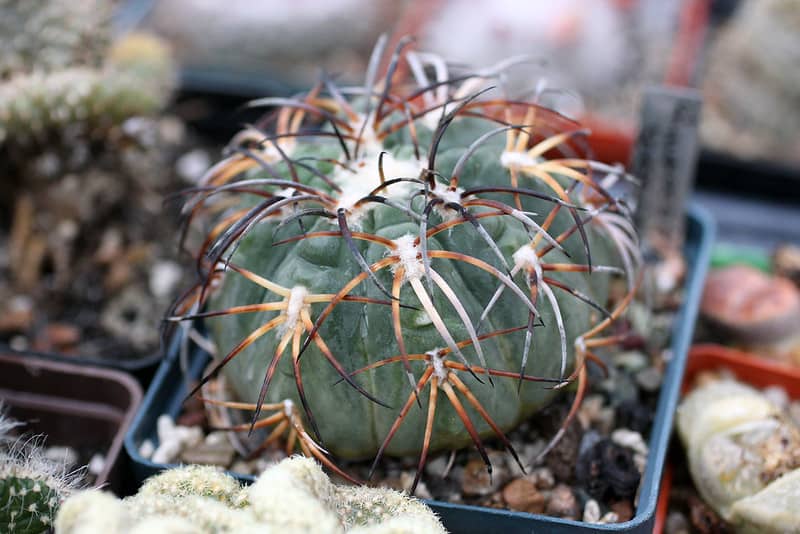
What To Do When A Cactus Becomes Etiolated
So, you’ve noticed that your cactus isn’t growing quite right, and you want to help it out. One thing you can do is make sure it gets enough light. Find a nice spot for it on your windowsill where it can get some sunlight. But be careful not to give it too much sun all at once. Let it get used to the light by moving it a little closer to the window every few days. This way, it won’t get overwhelmed by the sudden intense light.
But here’s the thing, finding a better spot won’t magically fix the stretched-out growth. The cactus will continue to grow wider on top of the skinny growth, giving it a unique shape.
With some cacti, you can actually remove the stretched-out parts. For example, you can trim off the deformed parts of an Opuntia cactus. But other types of cacti will keep the effects of the lack of light. At least then, you’ll see the story of your cactus reflected in its appearance!
Conclusion: Does cactus need sunlight?

While cacti in general need lots of light, not all of them can handle direct sunlight.
As a general rule, species with lots of tiny hairs or strong and numerous spines need plenty of sunlight. On the other hand, species with fewer spines and succulent plants can handle less intense sunlight. Good airflow is also important for the latter.
Figuring out the right amount of light for your cactus can be a bit tricky. Especially if you live in a cold and dark place, you need to make sure your cactus gets enough light, even if it’s just every now and then.
Cacti are naturally used to getting long hours of light. Most cacti can survive with less or indirect light, but they will grow slower and may never bloom. During summer, cacti usually get more intense light compared to winter.
If you don’t have access to natural sunlight, you can use artificial light for your cactus. Fluorescent lamps are a good choice because they provide bright light. Just keep in mind that they don’t give off much heat, and you should place them about 10-30 cm above the cactus. Halogen lamps are another option, as they give off more heat. High-Pressure Sodium (HPS) lights are also great, but they use a lot of energy.
Remember, too much direct sunlight can also be a problem. If your cactus gets too much direct light, the side facing the hot sun can lose its true color and get burned. These burns might leave permanent marks.

